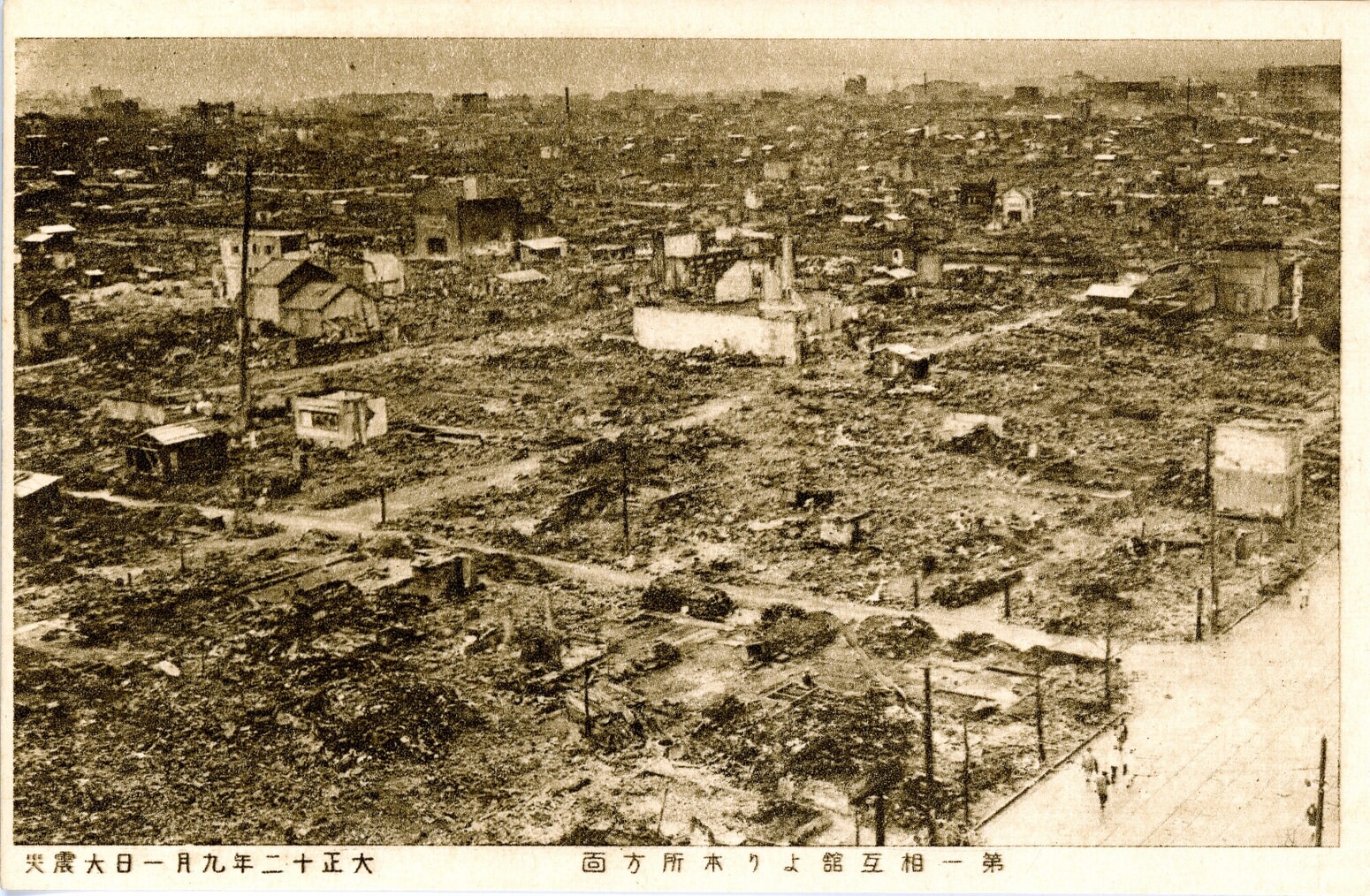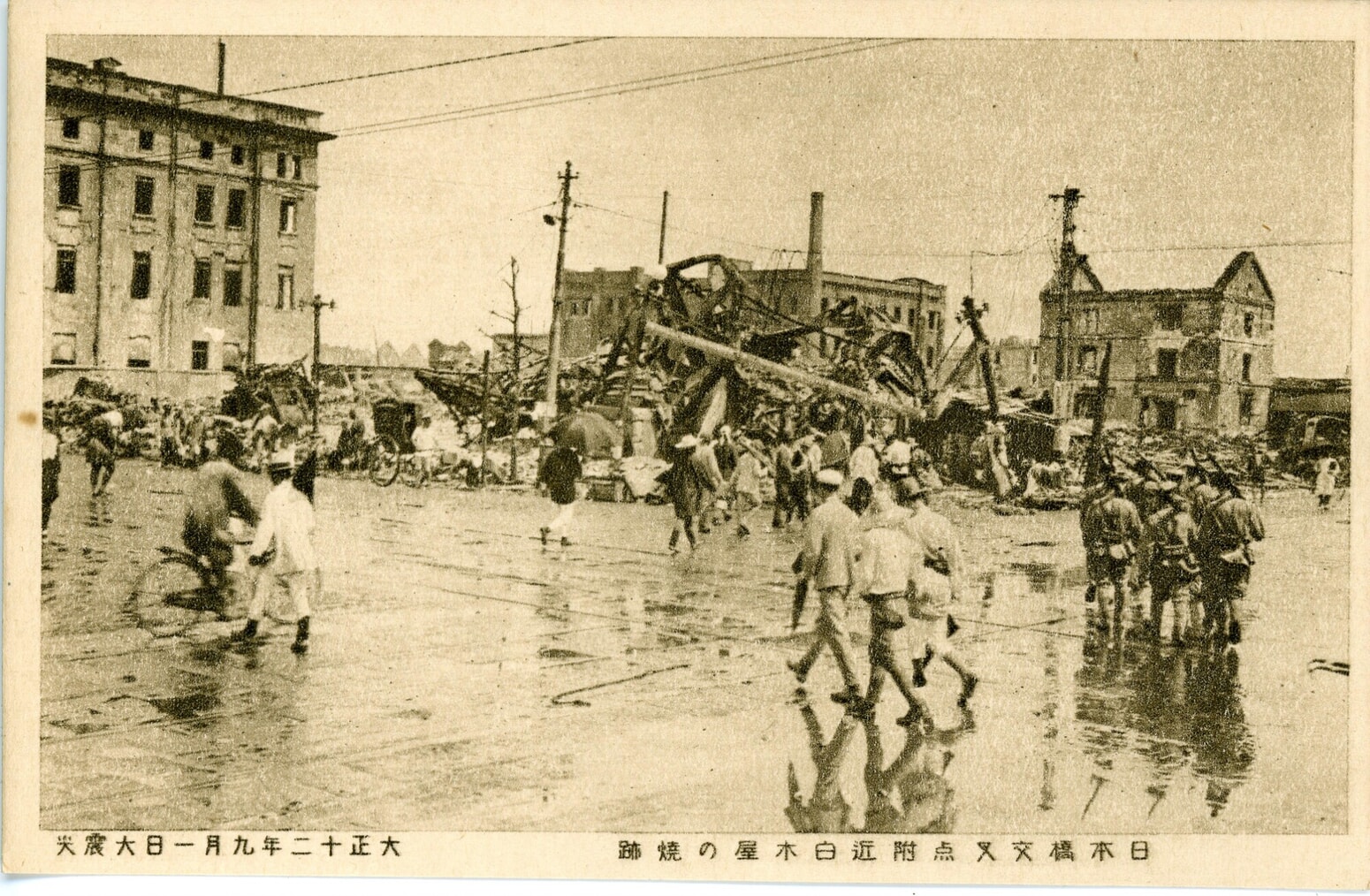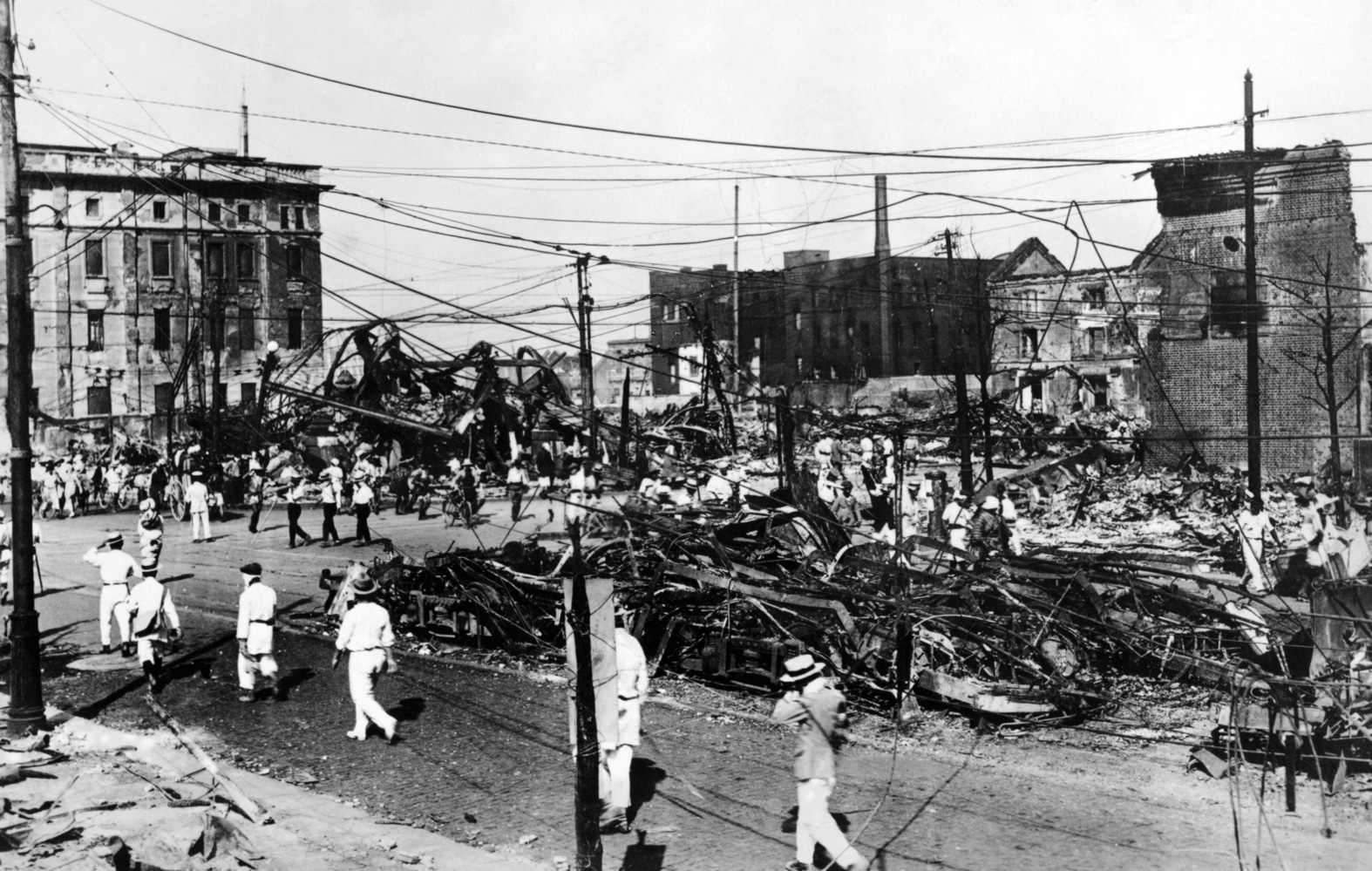The Nice Kanto Earthquake: Postcards of Tragedy
This September marks the 99th yr because the Nice Kanto Earthquake, which stays considered one of Japan’s most devastating pure disasters. Adopted by damaging fires and towering waves from the tsunami, this tragedy led to over 100,000 deaths and concrete destruction. Since then, Tokyo has constructed itself again up, experiencing great modifications in lots of facets together with social, political and concrete improvement.
There are various historic sources by means of which we will take a look at the Nice Kanto Earthquake, together with postcards. In contrast to the postcards of at the moment depicting stunning vacationer spots these had been prints depicting ruins, lifeless our bodies and folks strolling by means of rubble.
Just some days after a big earthquake introduced the town surroundings tumbling down, the streets had been lined up with round 300 distributors of those postcards. A query involves thoughts as to how the imagery of disaster turned so sought out by the general public and what the circulation of such pictures meant at the moment.

The Postcard Growth of the Early 1900s
Throughout wartime, postcards had been a preferred mode of communication. The small writing area on one facet, accompanied by photos on the opposite, made postcards a compact and handy approach of notifying family members of the sender’s location and well-being. The recognition of postcards continued after the Russo-Japanese Struggle. Submit-war postcards depicted scenes of the struggle and had been saved as memorabilia.
Extra just like aesthetically pleasing postcards as we all know and love them at the moment although had been the ehagaki seeds, which means “postcards of beauties.” With portraits of geisha and film actresses, ladies on postcards had been the twentieth century equal of at the moment’s idols. The expansion of the printing press business after the struggle gave delivery to the postcard growth in early twentieth century Japan, growing the utility of the postcard as not merely a communication instrument however as one thing commemorative and aesthetic as properly.
How The Nice Kanto Earthquake Postcards Got here to Be
A 7.9 magnitude earthquake couldn’t hinder the postcard development. Quite the opposite, it created extra demand. The aftermath of the Nice Kanto Earthquake turned a preferred subject material for postcards at the moment. Black and white pictures of Tokyo residents in search of refuge, in addition to aerial views of destroyed buildings had been frequent.
These postcards weren’t produced for aesthetics however as a serious instrument for the unfold of knowledge. Seeing how newspaper firms had been left with their places of work in shambles, postcard publishers tried to fill the hole. A really small variety of publishing firms had been lucky sufficient to outlive, considered one of them being Mitsumura Printing, which took benefit of its remaining assets to churn out postcards.

Though primarily printed to unfold data, The Nice Kanto Earthquake postcards had a problematic facet too. In some instances, they transcended communication and the subject material was sensationalized.
Pictures exhibiting the devastation of the earthquake turned wanted by publishers and the general public alike. Huckster photographers and postcard publishers rushed to take pictures of assorted scenes and made a substantial quantity of revenue by promoting photos of the tragedy. Official prohibition towards exhibiting figures of lifeless our bodies was ignored by postcard sellers and prints exposing ugly physique horror nonetheless exist even at the moment.
Creating Collective Reminiscence
The demand for postcards depicting scenes from the earthquake was not solely sensationalist. A part of it was pushed by the sincere want for memorialization. These postcards additionally contributed to nation-building. Throughout a interval when radios weren’t widespread and print media was halted, postcards and pictures had been de facto a major medium for data.
The postcards conveyed not solely the situation of the town, however the grieving of the individuals as properly. Seeing photos of households standing subsequent to their burned houses evoked a way of emotional resonance for the viewers.
The circulation of postcards depicting the misery of the town and its individuals in a collective expertise. Though the earthquake struck just one facet of the nation, the visible expertise by means of these postcards spreads the sensation of empathy throughout the nation.

Postcard Tradition Immediately
Practically a century later, postcards have misplaced their grip as a preferred communication and knowledge instrument. We now have smartphones to satisfy these features — a handy and fast different. However that doesn’t imply that postcards have misplaced their appeal altogether. Immediately, postcards have change into souvenirs, a approach for us to recollect our go to to vacationer spots or artwork museums.
Regardless of the altering operate of postcards all through historical past, one factor that is still fixed is their skill to assist us keep in mind.
Featured picture courtesy of the Principal Library, Kyoto College: “Nice Kanto Earthquake: The Wreckage of Asakusa Park Sixth Ward.”
